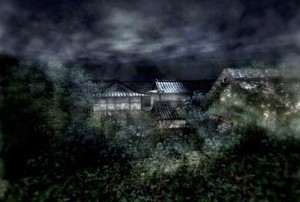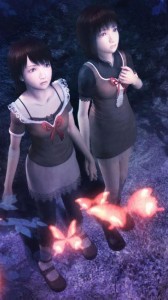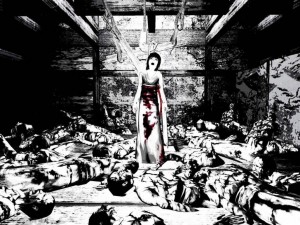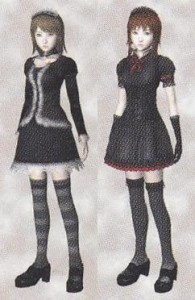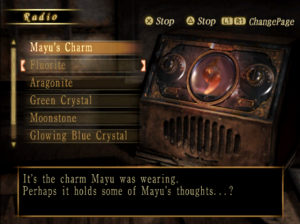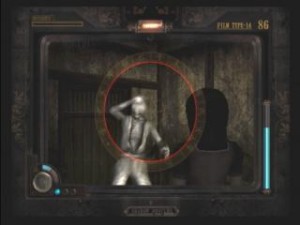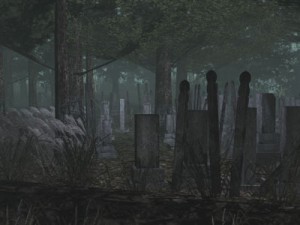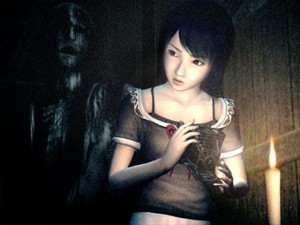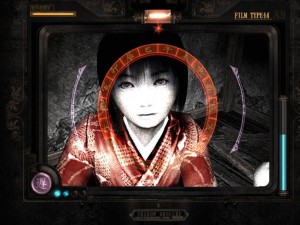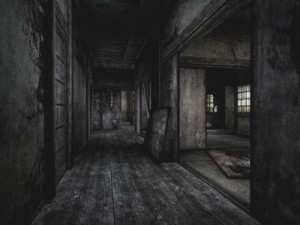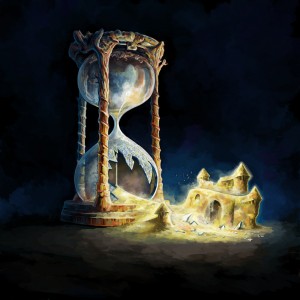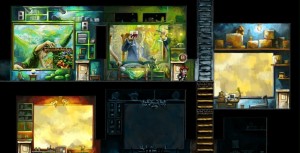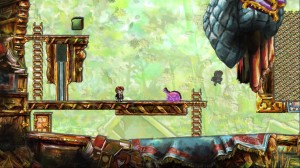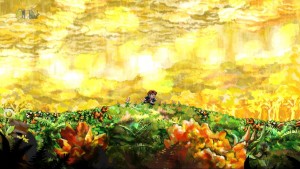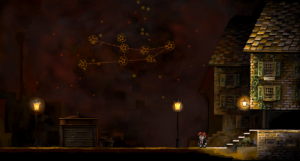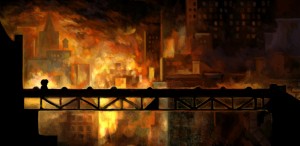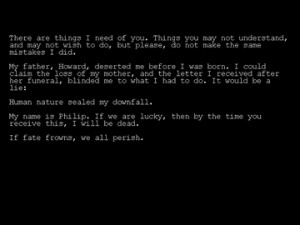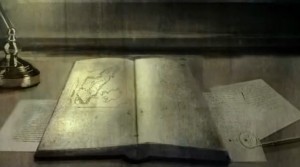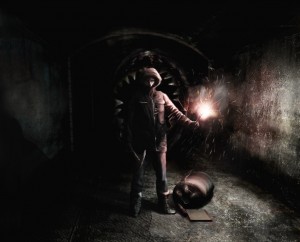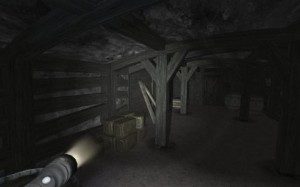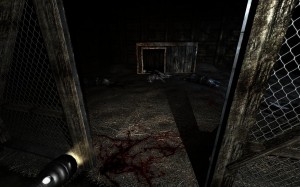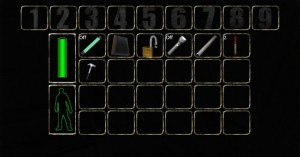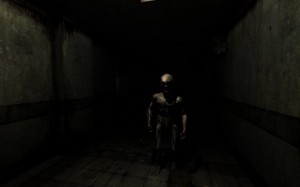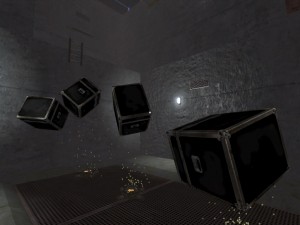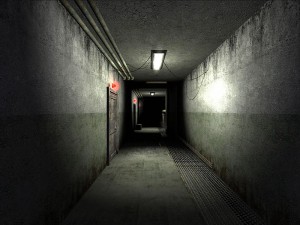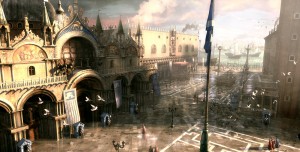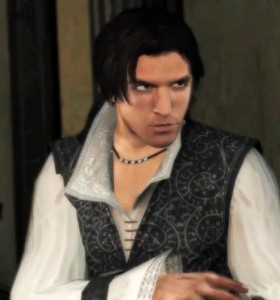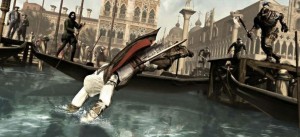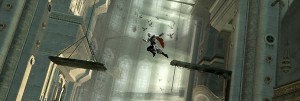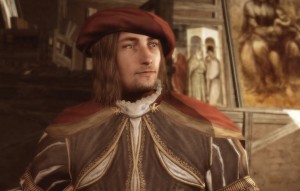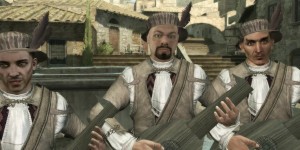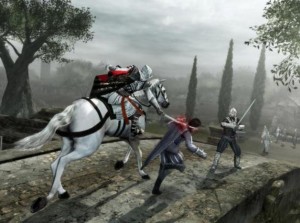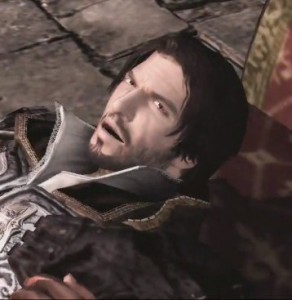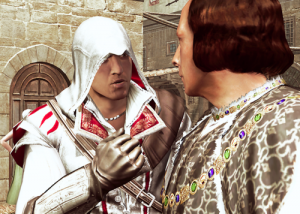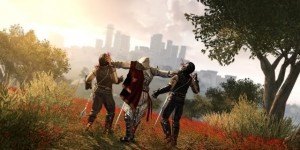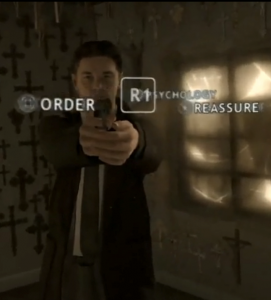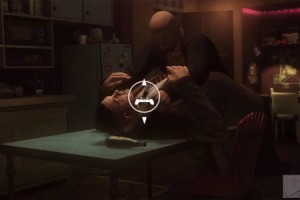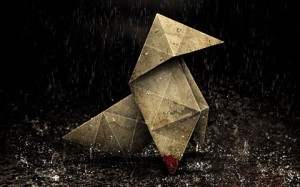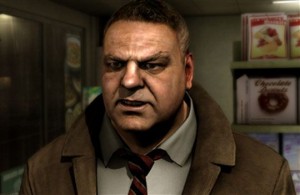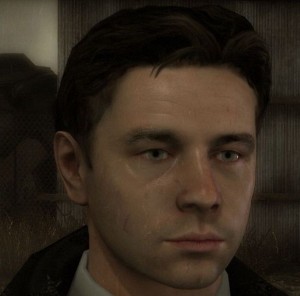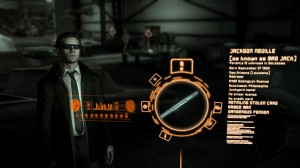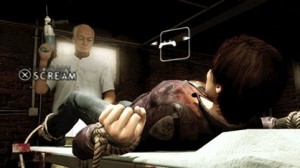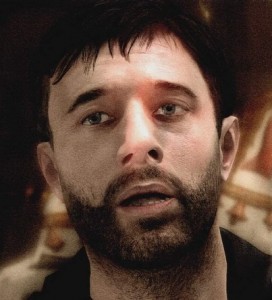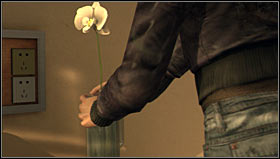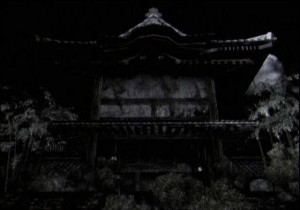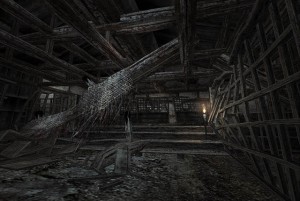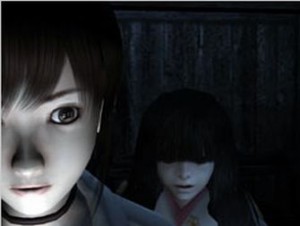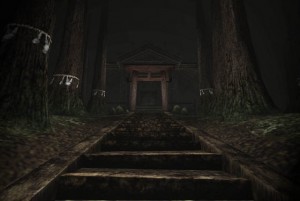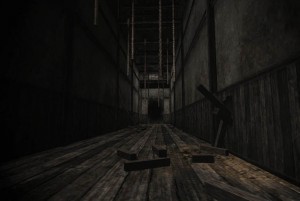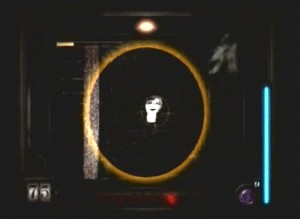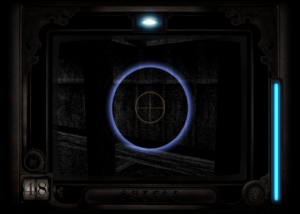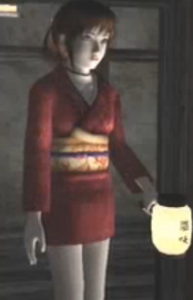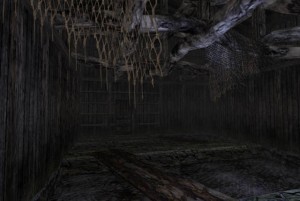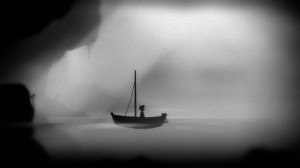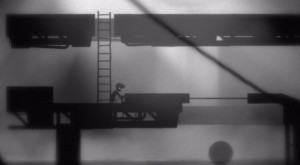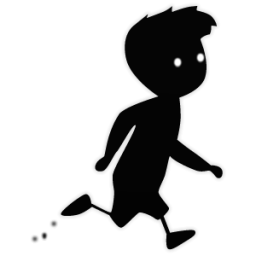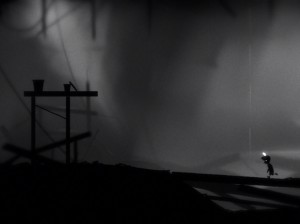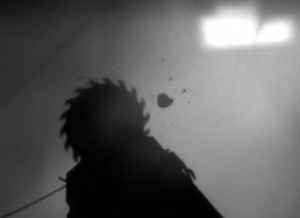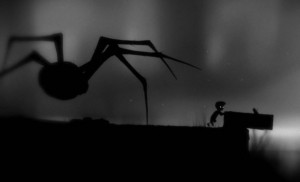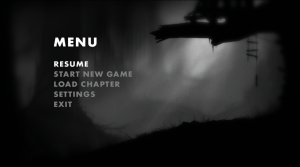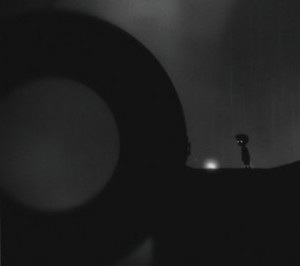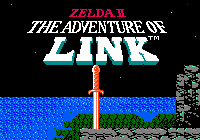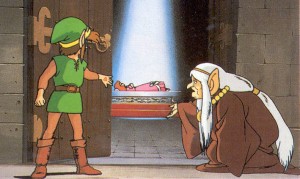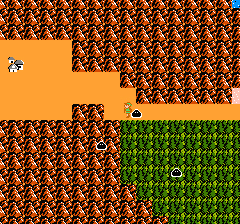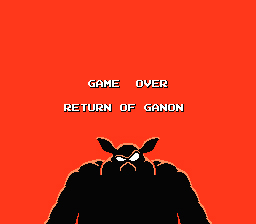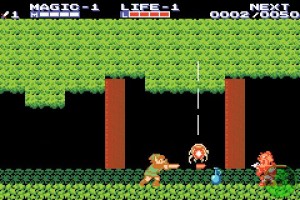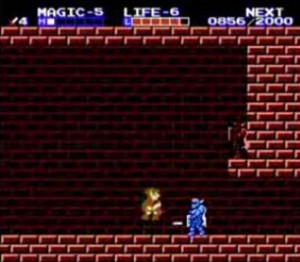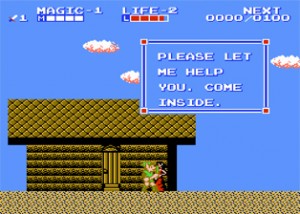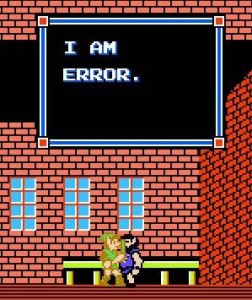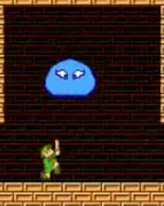I’m not usually a big fan of shooters. For me, an enjoyable game includes at least one of three things: a solid storyline, well-developed characters or a unique atmosphere, none of which tend to be a shooter’s strong point. Besides, blowing up heads isn’t exactly my idea of fun. Still, I’d heard enough praise for Bioshock that I became curious and decided to give it a shot (pun fully intended). It’s an FPS alright, and a pretty violent one at that. But it does have two of the aforementioned things: an elaborate storyline and a captivating atmosphere.
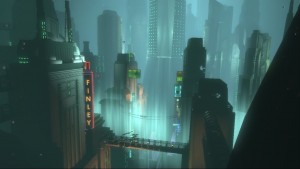 The game takes place in 1960. You control Jack, a bloke on a transatlantic flight, which, as his luck would have it, crashes. He comes to in the middle of the ocean, the only survivor of the catastrophe, and realises that there’s a lighthouse nearby (yes, in the middle of the ocean). Inside, he finds a bathysphere which takes him to an underwater metropolis called Rapture. As he gradually discovers through various recordings left behind, the city was founded in secret after WWII on the principle of free enterprise by a guy called Andrew Ryan, who got fed up with both capitalism and communism. So he gathered the best and brightest in all domains, and gave them free rein to create and innovate. Around 1950, a substance named ADAM was discovered, allowing for selective rewriting of a person’s genetic code, ranging from regenerative properties, to cosmetic enhancements, to being able to shoot fireballs. It was produced in small quantities by a sea slug, but implanting said slug into human hosts (specifically, little girls) dramatically increased the yield. This led to the creation of Little Sisters: girls ‘repurposed’ to produce ADAM. The problem was that ADAM abuse caused dependence, mental damage and severe physical deformities, gradually
The game takes place in 1960. You control Jack, a bloke on a transatlantic flight, which, as his luck would have it, crashes. He comes to in the middle of the ocean, the only survivor of the catastrophe, and realises that there’s a lighthouse nearby (yes, in the middle of the ocean). Inside, he finds a bathysphere which takes him to an underwater metropolis called Rapture. As he gradually discovers through various recordings left behind, the city was founded in secret after WWII on the principle of free enterprise by a guy called Andrew Ryan, who got fed up with both capitalism and communism. So he gathered the best and brightest in all domains, and gave them free rein to create and innovate. Around 1950, a substance named ADAM was discovered, allowing for selective rewriting of a person’s genetic code, ranging from regenerative properties, to cosmetic enhancements, to being able to shoot fireballs. It was produced in small quantities by a sea slug, but implanting said slug into human hosts (specifically, little girls) dramatically increased the yield. This led to the creation of Little Sisters: girls ‘repurposed’ to produce ADAM. The problem was that ADAM abuse caused dependence, mental damage and severe physical deformities, gradually  creating a violent substrate of the population (Splicers) which fought over it. Eventually, Little Sisters were sent to gather ADAM from their corpses, but since that exposed them to attack, Big Daddies were created: heavily altered human beings, mentally conditioned to protect the girls with their lives. However, this didn’t prevent civil war, which erupted in 1959, and Rapture, as Jack finds it, is a wrecked battleground where Splicers roam the streets. Stranded after his bathysphere is destroyed, he’s contacted by a guy calling himself Atlas (a reference to Ayn Rand, whose work heavily influenced the game) who offers to help him escape in return for assistance in rescuing his family.
creating a violent substrate of the population (Splicers) which fought over it. Eventually, Little Sisters were sent to gather ADAM from their corpses, but since that exposed them to attack, Big Daddies were created: heavily altered human beings, mentally conditioned to protect the girls with their lives. However, this didn’t prevent civil war, which erupted in 1959, and Rapture, as Jack finds it, is a wrecked battleground where Splicers roam the streets. Stranded after his bathysphere is destroyed, he’s contacted by a guy calling himself Atlas (a reference to Ayn Rand, whose work heavily influenced the game) who offers to help him escape in return for assistance in rescuing his family.
 Rapture is an original creation and a unique setting, combining eerie beauty with nightmarish desolation, and managing to be both grandiose and claustrophobic at the same time; a drowned, fallen Eden. It has a dated charm to it, with its art deco architecture (think Rockefeller Center), old 1950s-styled posters on the walls, and a soundtrack composed of 1950s music. Of course, all this has been copiously damaged: there are fires, busted walls and leaks all over the place. Splicers wander
Rapture is an original creation and a unique setting, combining eerie beauty with nightmarish desolation, and managing to be both grandiose and claustrophobic at the same time; a drowned, fallen Eden. It has a dated charm to it, with its art deco architecture (think Rockefeller Center), old 1950s-styled posters on the walls, and a soundtrack composed of 1950s music. Of course, all this has been copiously damaged: there are fires, busted walls and leaks all over the place. Splicers wander 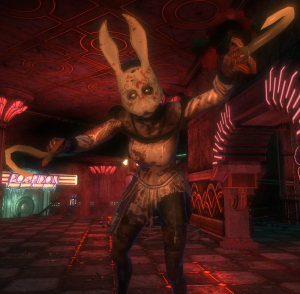 among the rubble, chattering to themselves, ruins of human beings in torn cocktail outfits and masks, work blues or fishermen’s overalls. And then, every once in a while, you’ll hear the heavy stomp and bellow of a Big Daddy or the creepy singsong of a Little Sister, before glimpsing the pair trudging around a corner: a hulking, unnatural form in a diving suit and a scrawny girl with glowing yellow eyes, a ragged dress and a long syringe attached to a milk bottle.
among the rubble, chattering to themselves, ruins of human beings in torn cocktail outfits and masks, work blues or fishermen’s overalls. And then, every once in a while, you’ll hear the heavy stomp and bellow of a Big Daddy or the creepy singsong of a Little Sister, before glimpsing the pair trudging around a corner: a hulking, unnatural form in a diving suit and a scrawny girl with glowing yellow eyes, a ragged dress and a long syringe attached to a milk bottle.
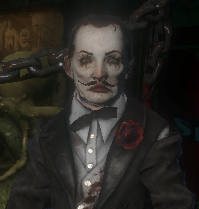 During his stay in Rapture, Jack will get up close and personal with its inhabitants (the sane, the insane, the mutated and the gleefully bonkers, such as Sander Cohen) and sample the local delicacies. Read: shoot things in the face and shoot up on ADAM. Splicers constitute the bulk of enemies, and while Big Daddies aren’t hostile unless Jack actively attacks them, you can probably guess that he’ll be required to do so at some point (and it is, at first, a hefty challenge which requires preparation). He has access to a wide selection of weapons, ranging from a wrench, to a shotgun, to a grenade launcher, but also a plethora of Plasmids and Gene Tonics, which can either be found lying around or purchased with ADAM at Gatherer’s Gardens machines. Plasmids grant offensive
During his stay in Rapture, Jack will get up close and personal with its inhabitants (the sane, the insane, the mutated and the gleefully bonkers, such as Sander Cohen) and sample the local delicacies. Read: shoot things in the face and shoot up on ADAM. Splicers constitute the bulk of enemies, and while Big Daddies aren’t hostile unless Jack actively attacks them, you can probably guess that he’ll be required to do so at some point (and it is, at first, a hefty challenge which requires preparation). He has access to a wide selection of weapons, ranging from a wrench, to a shotgun, to a grenade launcher, but also a plethora of Plasmids and Gene Tonics, which can either be found lying around or purchased with ADAM at Gatherer’s Gardens machines. Plasmids grant offensive 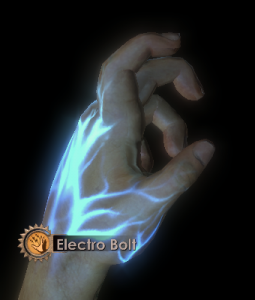 abilities, like shooting fireballs, lightning or even bees, telekinetically throwing objects or hypnotising Big Daddies, and when you first acquire them, you are treated to an amusing cartoon-drawn ad explaining their use. They also require a constant supply of EVE, a modified version of ADAM, which is a blue substance found in large syringes (let’s not even get into hygiene concerns). Gene Tonics are passive enhancements, which come in three varieties: Combat Tonics enhance Jack’s fighting abilities (eg. Armored Shell reduces physical damage taken by 15%), Physical Tonics augment his overall condition (eg. Medical Expert makes First Aid Kits 20% more effective) and Engineering Tonics boost his competence with machines (eg. Speedy Hacker allows more time for hacking). Because Rapture is populated with a variety of those. There are gun turrets and security cameras (which summon gun bots when they detect Jack), both of which can be hacked to use against Splicers. Health Stations (which offer an HP refill for a price, but can also be used by Splicers) can be hacked to reduce their price and make them lethal to Splicers.
abilities, like shooting fireballs, lightning or even bees, telekinetically throwing objects or hypnotising Big Daddies, and when you first acquire them, you are treated to an amusing cartoon-drawn ad explaining their use. They also require a constant supply of EVE, a modified version of ADAM, which is a blue substance found in large syringes (let’s not even get into hygiene concerns). Gene Tonics are passive enhancements, which come in three varieties: Combat Tonics enhance Jack’s fighting abilities (eg. Armored Shell reduces physical damage taken by 15%), Physical Tonics augment his overall condition (eg. Medical Expert makes First Aid Kits 20% more effective) and Engineering Tonics boost his competence with machines (eg. Speedy Hacker allows more time for hacking). Because Rapture is populated with a variety of those. There are gun turrets and security cameras (which summon gun bots when they detect Jack), both of which can be hacked to use against Splicers. Health Stations (which offer an HP refill for a price, but can also be used by Splicers) can be hacked to reduce their price and make them lethal to Splicers. 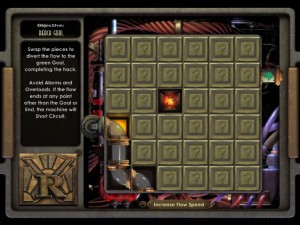 Vending machines, which sell food and ammo, can also be hacked to reduce their prices, and the odd safe can yield up sizeable amounts of loot. Hacking is achieved through a minigame, which requires building a pipe to direct fluid from one end of a grid to another. This isn’t always easy, and a failure will result in an electric shock and some bots being summoned.
Vending machines, which sell food and ammo, can also be hacked to reduce their prices, and the odd safe can yield up sizeable amounts of loot. Hacking is achieved through a minigame, which requires building a pipe to direct fluid from one end of a grid to another. This isn’t always easy, and a failure will result in an electric shock and some bots being summoned.
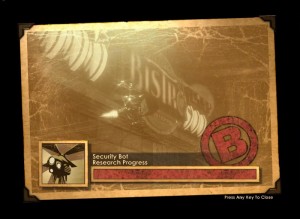 Another item which will give Jack an edge in combat is the research camera. Once found, it allows him to take pictures of enemies and bots, which reveal their weaknesses. Each picture is rated according to its quality (well-framed, close-up, action shot, multiple enemies). Dead enemies are worth less, and photographing the same enemy gradually yields fewer points, prompting Jack to go find fresh blood after a while. There are five ‘levels’ of research for each subject: levels one, three and five grant damage bonuses, while levels two and four grant Gene Tonics.
Another item which will give Jack an edge in combat is the research camera. Once found, it allows him to take pictures of enemies and bots, which reveal their weaknesses. Each picture is rated according to its quality (well-framed, close-up, action shot, multiple enemies). Dead enemies are worth less, and photographing the same enemy gradually yields fewer points, prompting Jack to go find fresh blood after a while. There are five ‘levels’ of research for each subject: levels one, three and five grant damage bonuses, while levels two and four grant Gene Tonics.
 Weapons can be upgraded at Power to the People stations, while Gene Tonics and Plasmids can be equipped at Gene Banks. Moreover, junk items (like tubes or wire) can be combined to create rare ammo at U-Invent machines. Jack’s HP and EVE supplies are indicated by a red and blue bar at the top of the screen and can be replenished either with First Aid Kits and EVE syringes (of which he can carry up to nine each, when fully upgraded) or with various foodstuffs and items, either purchased, found lying around or looted off enemy corpses. Snacks (crisps and cakes) and bandages will replenish HP, coffee will replenish EVE, Pep Bars will replenish both, cigarettes will replenish EVE at the cost of some HP, while alcohol will do the reverse. Until you find the Booze Hound Gene Tonic, that is, which will turn alcohol into the most profitable resource in the game (making it replenish EVE instead of draining it). It won’t prevent Jack from getting woozy if he imbibes too much though, so make sure he’s not about to be jumped by a Splicer before going on a bender. Finally, there are a number of Vita-Chambers dotted around, which will revive Jack should he get stomped. More
Weapons can be upgraded at Power to the People stations, while Gene Tonics and Plasmids can be equipped at Gene Banks. Moreover, junk items (like tubes or wire) can be combined to create rare ammo at U-Invent machines. Jack’s HP and EVE supplies are indicated by a red and blue bar at the top of the screen and can be replenished either with First Aid Kits and EVE syringes (of which he can carry up to nine each, when fully upgraded) or with various foodstuffs and items, either purchased, found lying around or looted off enemy corpses. Snacks (crisps and cakes) and bandages will replenish HP, coffee will replenish EVE, Pep Bars will replenish both, cigarettes will replenish EVE at the cost of some HP, while alcohol will do the reverse. Until you find the Booze Hound Gene Tonic, that is, which will turn alcohol into the most profitable resource in the game (making it replenish EVE instead of draining it). It won’t prevent Jack from getting woozy if he imbibes too much though, so make sure he’s not about to be jumped by a Splicer before going on a bender. Finally, there are a number of Vita-Chambers dotted around, which will revive Jack should he get stomped. More 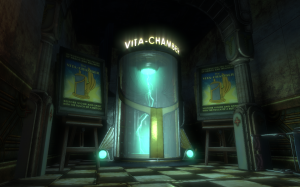 importantly, this won’t regenerate enemies, so he can just pick up where he left off. If you’re looking for a challenge though, set the game to the Hard or Survivor difficulty and turn the Vita-Chambers off. There are trophies/achievements for that, appropriately dubbed “Brass Balls” and “I Chose the Impossible”, respectively.
importantly, this won’t regenerate enemies, so he can just pick up where he left off. If you’re looking for a challenge though, set the game to the Hard or Survivor difficulty and turn the Vita-Chambers off. There are trophies/achievements for that, appropriately dubbed “Brass Balls” and “I Chose the Impossible”, respectively.
Splattering Splicers is all well and good, but, to spice things up, the game throws a moral dilemma at you. Soon after his arrival, Jack runs into Brigid Tenenbaum, the woman who originally created the Little Sisters. However, she gradually began to feel remorse and decided to save the girls, killing the slugs inside them with a special Plasmid. She offers it to Jack and urges him to save the Little Sisters he encounters–which entails killing their Big Daddies, affectionately dubbed “Mr Bubbles”–, promising a reward. Atlas, on the other hand, tells him to simply “harvest” them (ie. forcibly rip out the slugs, which kills them), as that will yield more ADAM. You can thus take two 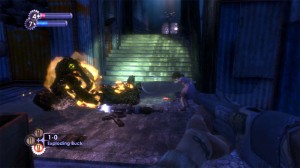 different paths through the game for two different endings: either save the Little Sisters (which results in Tenenbaum gifting you with surplus ADAM, as well as Plasmids and Tonics) or kill them all. Personally, I could never do the latter: simply hearing a Little Sister crying after you take down her Big Daddy (“wake up, Mr Bubbles…”) is enough to push all my pity buttons.
different paths through the game for two different endings: either save the Little Sisters (which results in Tenenbaum gifting you with surplus ADAM, as well as Plasmids and Tonics) or kill them all. Personally, I could never do the latter: simply hearing a Little Sister crying after you take down her Big Daddy (“wake up, Mr Bubbles…”) is enough to push all my pity buttons.
Overall, I enjoyed Bioshock. It’s nothing earth-shattering, but it delivers on its promises and does it in style. The dark atmosphere and moral implications of the storyline both 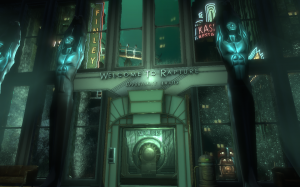 do a good job of enhancing the FPS experience. Rapture is an aesthetic treat, and the Big Daddy-Little Sister pair has become iconic. It won’t be everybody’s cup of tea though, and if you’re easily squicked, you’ll probably want to give it a wide berth. Otherwise, if you’re looking for something different from a run-of-the-mill bullet-fest, look no further. And if you haven’t had quite enough, the Challenge Rooms DLC provides some optional missions to put your survival instincts to the test.
do a good job of enhancing the FPS experience. Rapture is an aesthetic treat, and the Big Daddy-Little Sister pair has become iconic. It won’t be everybody’s cup of tea though, and if you’re easily squicked, you’ll probably want to give it a wide berth. Otherwise, if you’re looking for something different from a run-of-the-mill bullet-fest, look no further. And if you haven’t had quite enough, the Challenge Rooms DLC provides some optional missions to put your survival instincts to the test.

